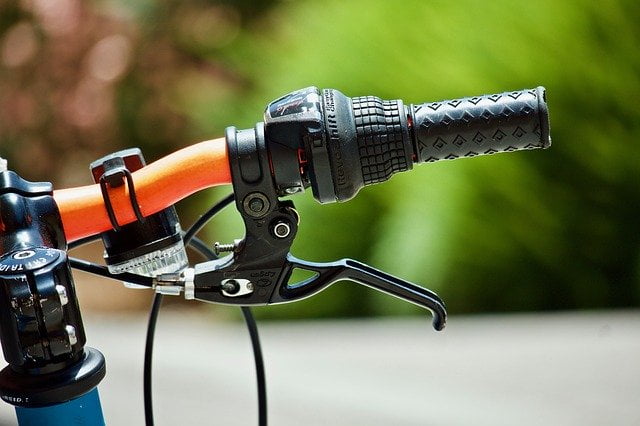One of the easiest things to do is to just buy a bike and off you go. Becoming familiar with the anatomy of your mountain bike can not be understated. Other bikers will talk about the parts of their bike and how they fixed components on their bike. It is nice to know what they are talking about.
You don’t want to be that mountain biker who doesn’t know what a crack arm is or what a spoke is. By knowing the parts of your mountain bike you will be better able to explain any problems and understand what other mountain bikers are talking about.
In this post, we will go through the anatomy of a mountain bike, and you can go biking without knowing without being that guy. Let’s get started!
The Anatomy Of Mountain Bike
Okay, you are new to mountain biking, and you want to know about the main parts of a mountain bike. Below, I have created a list of the main parts or components of a mountain bike.
Let’s get started.

- Frame
- Wheels
- Tires
- Brake Cable
- Handlebar
- Spokes
- Stem
- Skewer
- Rim
- Nipple
- Headset
- Brake Lever
- Chain
- Chain Ring
- Crank
- Pedal
- Derailleur
- Front Shocks
- Rear Shocks
- Saddle
- Seat Post
- Down Tube
- Hub
- Wheel Hub
Frame
The frame is properly the most important part of a mountain bike. It is important to make sure that the frame is of good quality as it is the backbone of your bike.
Wheels
The two wheels shouldn’t need much explaining. As you can see in the above diagram that the wheel contains spokes attached to the rim. The center is known as the hub.
Tires
The types give you traction with the ground. There is a wealth of choices of widths, tread patterns, and rubber compounds for mountain bike tires. Always talk to your local bike shop to decide on what best suits you.
Brake Cable
This is the cable that connects the brake lever to the brake mechanism.
Handlebar
This allows you to control and handle your bike, The mechanism in front of the frame connects the front fork to the stem and handlebars. This allows you to control the direction of your bike.
Spokes
The thick wires that join the hub to the rim.
Stem
A piece that attaches the handlebars to the steering tube.
Skewer
The metal rod goes through the hub, attaching the wheel to the dropouts of the frame.
Rim
The metal ring holds the spokes on the inside and the tire to the outside.
Nipple
A threaded receptacle that holds the end of the spoke to the rim.
Headset
The mechanism in front of the frame connects the front fork to the stem and handlebars.
Brake Levers
The lever on the handlebar activates the brakes and this allows you to slow and stop the front and rear wheels of your bike. This helps you to stop.
The left side is the front brake and the right side is the rear brake.
Chain
The circular set of links transfers power from the chainring to the cogs.
Chain Ring
The toothed rings attach to the crank to hold the chain.
Crank
The lever extends from the bottom bracket to the pedal, transferring the power to the chainrings.
Pedal
This everyone should know but it is the platform to pedal that is attached to the crank.
Derailleur
There are 2 types of derailleurs with these being the front and rear derailleurs. They are used to change through the gears.
You can read more on how to install a front derailleur on a mountain bike.
Front Shock
The front shocks absorb impacts on the front wheels. These help you to keep the bike controlled and improve performance.
Rear Shock
The shock absorber for the rear tire on dual-suspension type bikes. These help you to keep the bike controlled and improve performance.
Saddle
This is the seat where mountain bikers sit while biking.
Seat Post
The seat post is where the saddle is put and is found under the saddle. This post is normally adjustable.
Down tube
The section of the frame extends downward from the stem to the bottom bracket.
Hub
The center part of the wheel that the spokes are attached to.
Wheel Hub
The center of the wheel that the spokes are attached to.
Wrapping Up
Finally, if you are new to mountain biking you should try and learn about the different parts of the mountain bike. This will help you explain if you have problems and better understand what other mountain bikers are talking about.
And that’s it for now! I’d love it if this post on the anatomy of the mountain bike was helpful to you. Let me know if you have any questions and let me know if there is more to add.
Did you enjoy this post? Then don’t forget to pin it!






